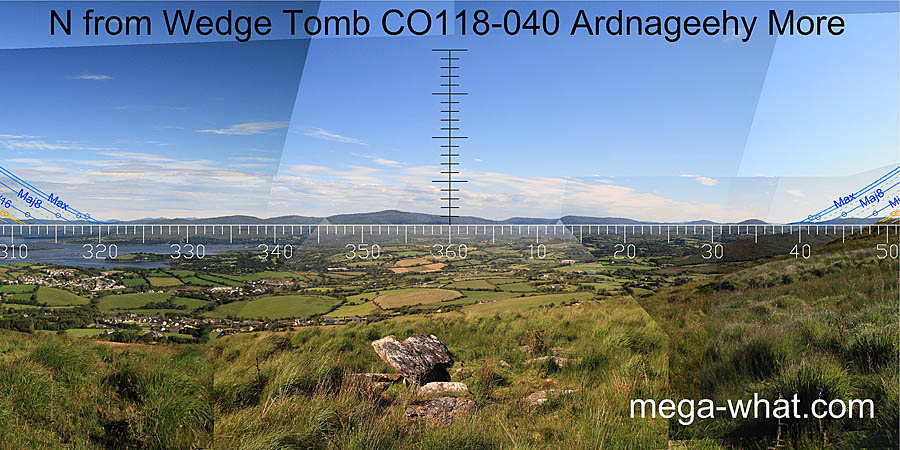
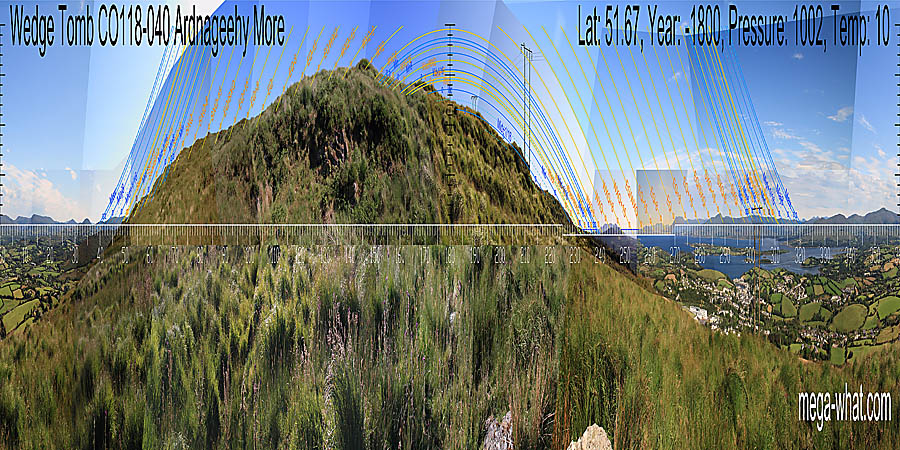 The original axis is uncertain but seems to be approximately east / west.
The original axis is uncertain but seems to be approximately east / west.
North is at a break on the right-hand slope of the highest distant hill.
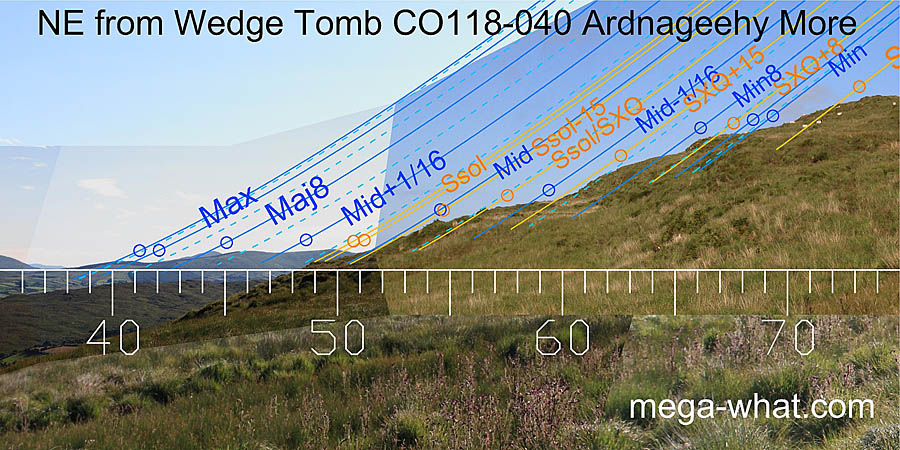
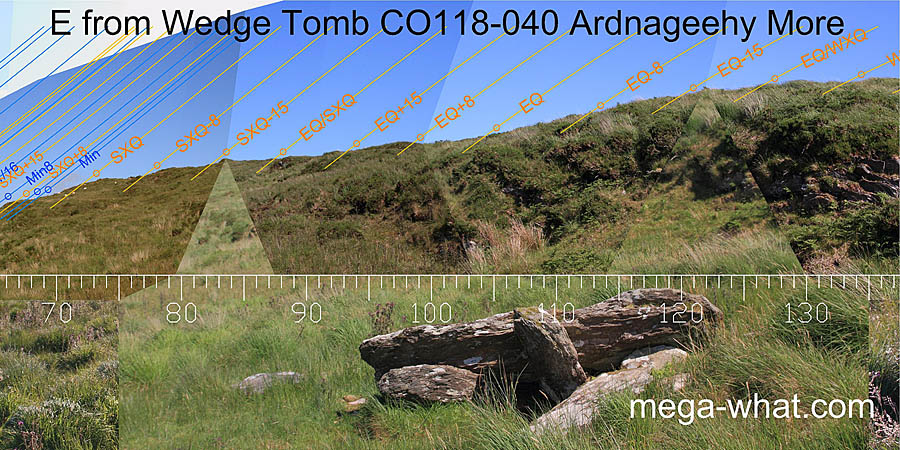 The north-eastern lunisticeLunistices are the most northerly and southerly moons of the month. The lunar equivalent of solstices - more.
zone spans the intersect between local and distant horizons.
Summer solstice sun rises from a distant dip and the lunar midpoint grazes the edge of the local hill which has a usefully stepped profile.
Major standstill is on the last hilltop before the bottom of the dip.
The north-eastern lunisticeLunistices are the most northerly and southerly moons of the month. The lunar equivalent of solstices - more.
zone spans the intersect between local and distant horizons.
Summer solstice sun rises from a distant dip and the lunar midpoint grazes the edge of the local hill which has a usefully stepped profile.
Major standstill is on the last hilltop before the bottom of the dip.
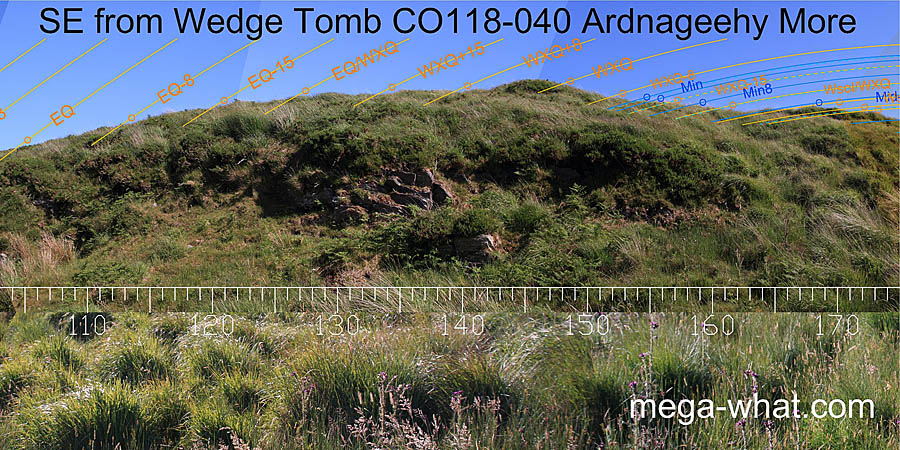
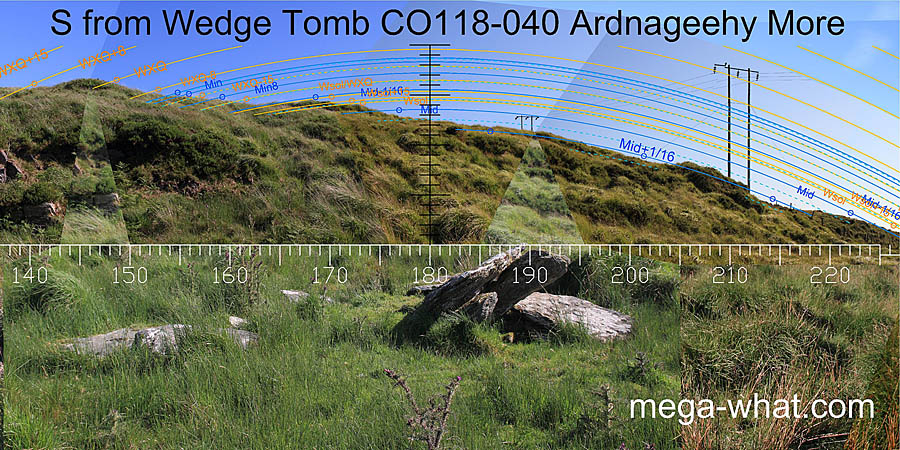 The southern horizon is extremely close but winter cross-quarter sun rises from the top and the solstice from another hump.
South itself is at a slight dip and coincides with the start of the limiting lunar period. Then, for about four years, the most southerly moons of the month cannot be seen at all.
The southern horizon is extremely close but winter cross-quarter sun rises from the top and the solstice from another hump.
South itself is at a slight dip and coincides with the start of the limiting lunar period. Then, for about four years, the most southerly moons of the month cannot be seen at all.
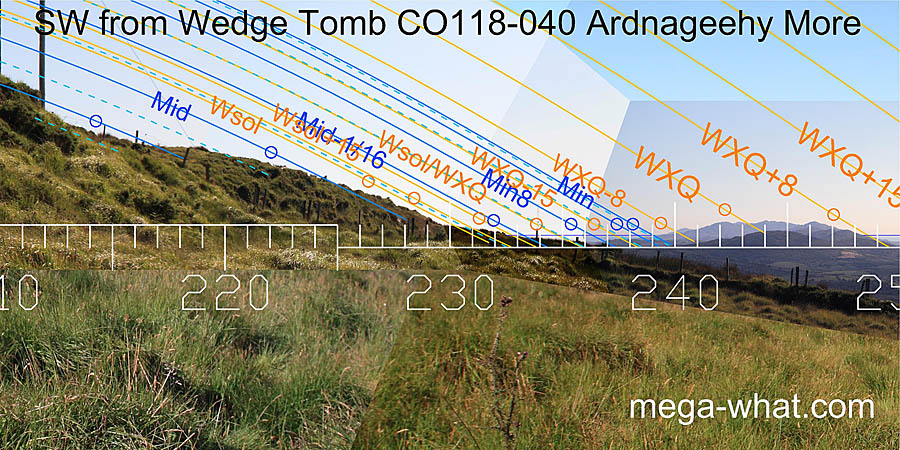 Winter solstice sun sets down the western slope of the local hill.
Winter solstice sun sets down the western slope of the local hill.
The edge of the sea horizon is a half-month from the solstice and is also effectively a lunar sixteenth. The northern side of the bay marks lunar minor standstillLunistice positions vary cyclically over an 18.6 year period but are fairly static for more than a year at either end of the range.
The Sheep's Head (Muintirvara peninsula) occupies two weeks centred on the cross-quarter.

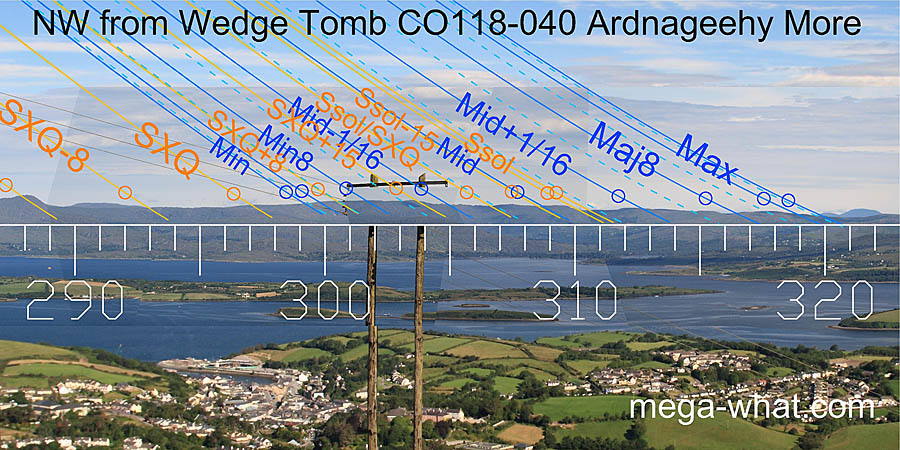 Bantry Bay is also a couple of weeks wide and a useful run of distant hills begins with the winter cross-quarter / equinox midpoint.
Summer solstice sunset gets a prominent step at the edge of a wide dip and the major standstill of the moon has a similarly emphasised marker.
Bantry Bay is also a couple of weeks wide and a useful run of distant hills begins with the winter cross-quarter / equinox midpoint.
Summer solstice sunset gets a prominent step at the edge of a wide dip and the major standstill of the moon has a similarly emphasised marker.
- Standing Stone CO118-041 is supposed to be c.200m to the NNE (29°) but a search around the given location failed to find it.
- Derreengreanagh Wedge Tomb is on top of the ridge, c.150m to the south but a boundary fence intervenes.
References
- Archaeological Survey of Ireland, record details. www.archaeology.ie/archaeological-survey-ireland
- RONAN, S. et al. 2009 Archaeological Inventory of County Cork, Volume 5. Dublin: Stationary Office. p117, no 16008.
- POWER, D. et al. 1992 Archaeological Inventory of County Cork, Vol 1: West Cork. Dublin: Stationary Office. Standing Stone CO118-041 - p45:no.233.
